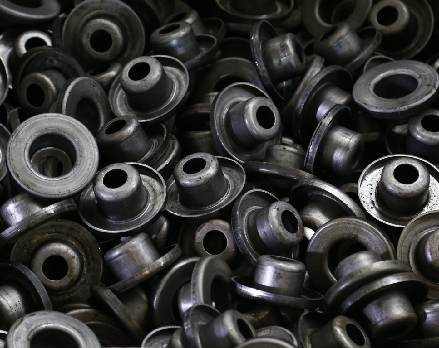 Afrikaans
Afrikaans  Albanian
Albanian  Amharic
Amharic  Arabic
Arabic  Armenian
Armenian  Azerbaijani
Azerbaijani  Basque
Basque  Belarusian
Belarusian  Bengali
Bengali  Bosnian
Bosnian  Bulgarian
Bulgarian  Catalan
Catalan  Cebuano
Cebuano  Corsican
Corsican  Croatian
Croatian  Czech
Czech  Danish
Danish  Dutch
Dutch  English
English  Esperanto
Esperanto  Estonian
Estonian  Finnish
Finnish  French
French  Frisian
Frisian  Galician
Galician  Georgian
Georgian  German
German  Greek
Greek  Gujarati
Gujarati  Haitian Creole
Haitian Creole  hausa
hausa  hawaiian
hawaiian  Hebrew
Hebrew  Hindi
Hindi  Miao
Miao  Hungarian
Hungarian  Icelandic
Icelandic  igbo
igbo  Indonesian
Indonesian  irish
irish  Italian
Italian  Japanese
Japanese  Javanese
Javanese  Kannada
Kannada  kazakh
kazakh  Khmer
Khmer  Rwandese
Rwandese  Korean
Korean  Kurdish
Kurdish  Kyrgyz
Kyrgyz  Lao
Lao  Latin
Latin  Latvian
Latvian  Lithuanian
Lithuanian  Luxembourgish
Luxembourgish  Macedonian
Macedonian  Malgashi
Malgashi  Malay
Malay  Malayalam
Malayalam  Maltese
Maltese  Maori
Maori  Marathi
Marathi  Mongolian
Mongolian  Myanmar
Myanmar  Nepali
Nepali  Norwegian
Norwegian  Norwegian
Norwegian  Occitan
Occitan  Pashto
Pashto  Persian
Persian  Polish
Polish  Portuguese
Portuguese  Punjabi
Punjabi  Romanian
Romanian  Russian
Russian  Samoan
Samoan  Scottish Gaelic
Scottish Gaelic  Serbian
Serbian  Sesotho
Sesotho  Shona
Shona  Sindhi
Sindhi  Sinhala
Sinhala  Slovak
Slovak  Slovenian
Slovenian  Somali
Somali  Spanish
Spanish  Sundanese
Sundanese  Swahili
Swahili  Swedish
Swedish  Tagalog
Tagalog  Tajik
Tajik  Tamil
Tamil  Tatar
Tatar  Telugu
Telugu  Thai
Thai  Turkish
Turkish  Turkmen
Turkmen  Ukrainian
Ukrainian  Urdu
Urdu  Uighur
Uighur  Uzbek
Uzbek  Vietnamese
Vietnamese  Welsh
Welsh  Bantu
Bantu  Yiddish
Yiddish  Yoruba
Yoruba  Zulu
Zulu rubber lagging roller
The Benefits and Applications of Rubber Lagging Rollers
Rubber lagging rollers play a crucial role in various industrial applications, particularly in the mining, construction, and material handling sectors. These specialized rollers are designed to enhance the operational efficiency of conveyor systems by providing superior traction, reducing equipment wear, and minimizing material spillage. This article explores the benefits and applications of rubber lagging rollers, highlighting their importance in modern industrial processes.
One of the primary advantages of rubber lagging is its ability to improve friction between the conveyor belt and the roller. This increased traction is particularly beneficial in heavy-load applications where standard metal rollers may struggle to grip the belt effectively. By incorporating rubber lagging, operators can ensure that their conveyor systems maintain a consistent and efficient movement of materials, reducing the risk of slippage and improving overall productivity.
Rubber lagging also offers excellent wear resistance, which is essential for extending the lifespan of both the roller and the conveyor belt. The harsh conditions often encountered in industrial environments—such as abrasive materials or extreme weather—can lead to significant wear and tear on equipment. Rubber lagging provides a protective layer that absorbs impact and minimizes damage, ultimately leading to reduced maintenance costs and longer equipment life.
rubber lagging roller

Furthermore, rubber lagging rollers are instrumental in minimizing material spillage. When materials are transported on conveyor systems, the risk of spillage can lead to not only lost product but also safety hazards in the workplace. The enhanced grip and friction provided by rubber-lagged rollers help keep materials in place, reducing the likelihood of leaks and spills. This is particularly important in industries such as mining and agriculture where the handling of bulk materials is common.
Another significant benefit of rubber lagging rollers is their noise reduction capabilities. Traditional metal rollers can generate substantial noise, contributing to a disruptive work environment. Rubber’s inherent acoustic dampening properties help to mitigate this issue, creating a quieter workspace that can improve employee comfort and concentration.
In terms of applications, rubber lagging rollers are widely used across various industries. In mining operations, they are essential for transporting raw materials, ensuring that heavy loads are moved efficiently without compromising safety. In the construction sector, these rollers assist in the movement of construction materials, making processes more streamlined and reducing downtime. Moreover, in manufacturing and warehousing, rubber lagging rollers enhance the reliability of conveyor systems, which are vital for operational efficiency.
In conclusion, rubber lagging rollers are an invaluable component of modern conveyor systems. Their ability to enhance traction, reduce wear, prevent spillage, and minimize noise makes them essential for maintaining high operational standards in various industries. As industries continue to evolve, the integration and advancement of rubber lagging technology will remain a critical factor in optimizing material handling processes and ensuring safety and efficiency in the workplace.
-
Revolutionizing Conveyor Reliability with Advanced Rubber Lagging PulleysNewsJul.22,2025
-
Powering Precision and Durability with Expert Manufacturers of Conveyor ComponentsNewsJul.22,2025
-
Optimizing Conveyor Systems with Advanced Conveyor AccessoriesNewsJul.22,2025
-
Maximize Conveyor Efficiency with Quality Conveyor Idler PulleysNewsJul.22,2025
-
Future-Proof Your Conveyor System with High-Performance Polyurethane RollerNewsJul.22,2025
-
Driving Efficiency Forward with Quality Idlers and RollersNewsJul.22,2025





























